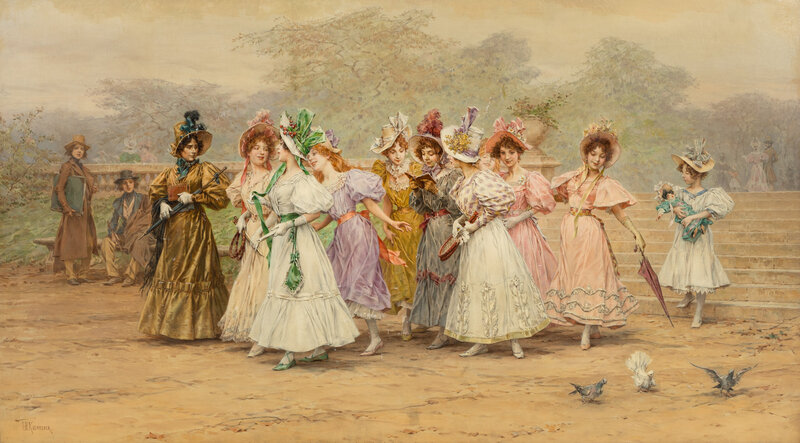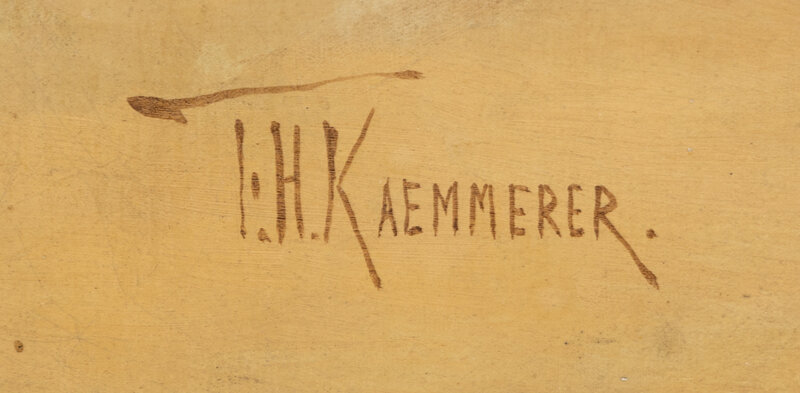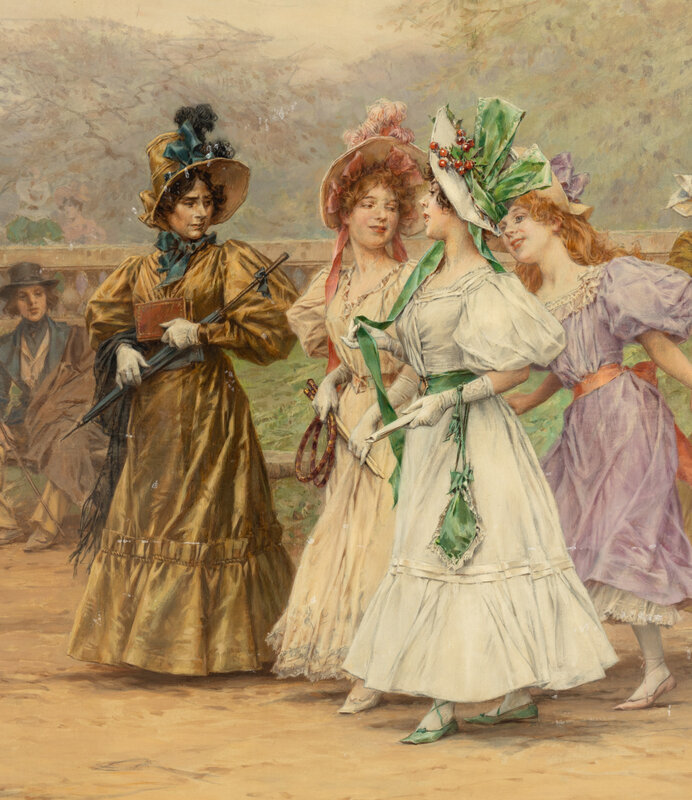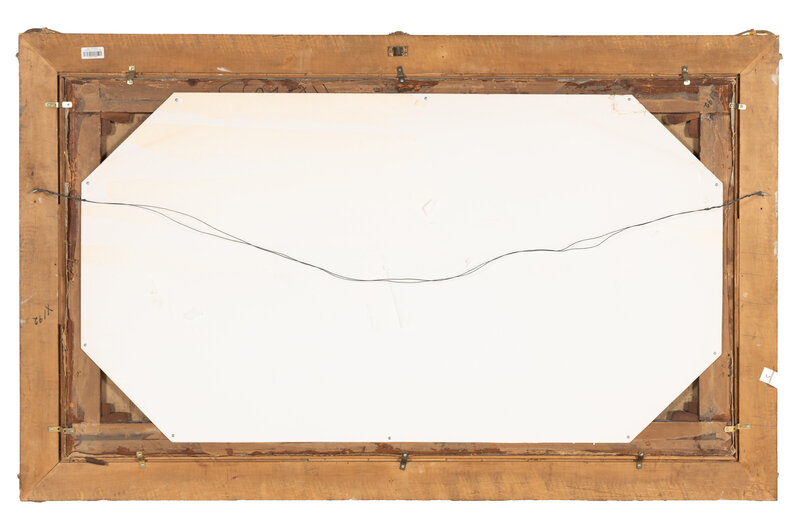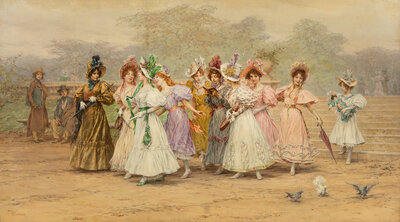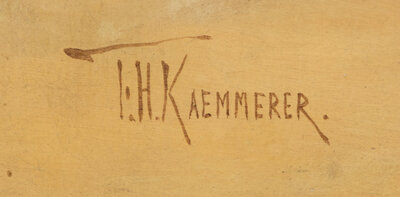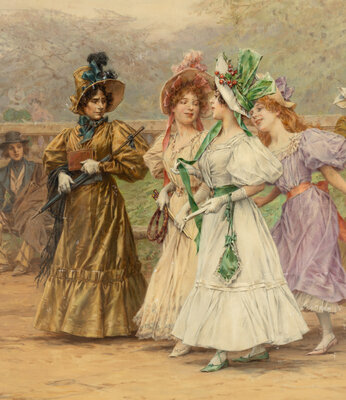Lot 40
Frederik Hendrik Kaemmerer
(Dutch, 1839-1902)
The Promenade
Sale 1297 - European Art
May 16, 2024
10:00AM CT
Live / Chicago
Own a similar item?
Estimate
$20,000 -
30,000
Lot Description
Frederik Hendrik Kaemmerer
(Dutch, 1839-1902)
The Promenade
oil on canvas
signed F.H. KAEMMERER (lower left)
33 3/4 x 59 1/2 inches
This lot is located in Chicago.
Provenance:
Sold: Sotheby's, New York, May 7, 1998, Lot 192
Acquired at the above sale by the present owner
Lot note:
In this impressively scaled composition, Frederic Hendrik Kaemmerer illustrates one of his most beloved themes: fashionably dressed young ladies strolling leisurely through a park. The large format allows the artist to deploy his vast artistic expertise in the depiction of the lively, bright group. After moving from The Hague to Paris in 1865, Kaemmerer was taught by Jean Leon Gerôme at the Académie des Beaux-Arts. Although trained as a landscape painter in the manner of the Hague School, the artist adopted a more academic style in Paris under the influence of Gerôme. He later found a winning method with costume painting, which he pursued for the rest of his career. Kaemmerer was part of a growing group of artists who found their inspiration in past centuries, often influenced by the contemporary novels of Alexandre Dumas and Sir Walter Scott. These painters and their followers yearned for simpler times, when romance and chivalry outweighed the head-spinning progress of the industrial revolution.
In The Promenade, Kaemmerer revels in the styles of the late 1820s, when an exuberant Romantic fashion took hold, with colorful patterns, curvaceous shapes, wide leg-o-mutton sleeves, and ornately decorated bonnets. The artist favored this period, which rejected the Napoleonic regime’s penchant for the Neoclassical, epitomized by clean geometric lines and a monochromatic palette. He used the panoramic format in several paintings with the same subject, some of them including gentlemen wearing the bicorne hat of the Directoire era. In the present composition, the young ladies are presumably students of one of the Parisian boarding schools that were dedicated to the education of upper-class young women. They stroll carefree through the park, badminton rackets in hand, looking forward to an anticipated game. Their dour teacher, tightly buttoned up and wrapped in a black scarf, looks disapprovingly towards the chattering and vivacious troupe, which has attracted the attention of two intently gazing young painters.
Condition Report
Contact Information
Auction Specialist
